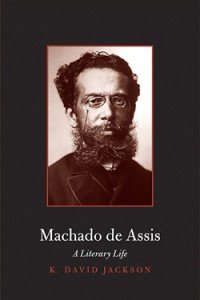
Machado de Assis and the Brazil roclamation of the Republic
 “The Brazilian people”, and we can also quote (back to him) Sérgio Buarque de Holanda with his Roots of Brazil, could even enumerate other as the recent Martim da Cunha Vasques Dust Glory : one (unexpected) history of Brazilian literature.It is always deeper understand the “soul” of a people peering into their literature, not by chance Marx enjoyed reading Honoré de Balzac and Lenin Leon Tolstoi, among others of course, and not to be alone on the left, Roosevelt (that said read everything) I liked to read Walter Scott in addition to historical anthologies and Greek classics.
“The Brazilian people”, and we can also quote (back to him) Sérgio Buarque de Holanda with his Roots of Brazil, could even enumerate other as the recent Martim da Cunha Vasques Dust Glory : one (unexpected) history of Brazilian literature.It is always deeper understand the “soul” of a people peering into their literature, not by chance Marx enjoyed reading Honoré de Balzac and Lenin Leon Tolstoi, among others of course, and not to be alone on the left, Roosevelt (that said read everything) I liked to read Walter Scott in addition to historical anthologies and Greek classics.
Machado de Assis (1839-1908) lived in the late period of the monarchy, Darcy Ribeiro was based on ethnic roots of the colonial period (1530 – 1815), but the historical evidence that says the philosopher Paul Ricoeur, the “I was there” is more fundamental than historiography.
We have already pointed the royalists and republicans elements of Esau and Jacob, and the political quietism in the work Memorial Aires.
Now we want to discover what is called apparent duplications in Quincas Borba, pseudo philosopher, the madness of the “ontology of abandonment” defined by Marta Senna in The Look oblique wizard, work also analyzed by Martim Vasques da Cunha.
But is the period of the proclamation (which is an edict not a popular will) of the Republic who is portrayed in Brás Cubas Epitaph, which breaks with romanticism even strong authors at the time as Flaubert and Zola, to picture a river of January with indifference, pessimism and irony, breaking with the linearity of both romantic literature as preceded the “modernism” to adopting a realistic tone.
Not coincidentally, the work began to be written from March to December 1880 in the Journal, and was later published as a book in 1881.
The work portrays slavery, social classes, scientism and positivism of the time, coming to create even a new philosophy, then developed in Quincas Borba (1891) already after the “proclamation” of the Republic (1889), Quincas Borba It came later in 1891 with a certain “philosophy” and then still Dom Casmurro (1899).









